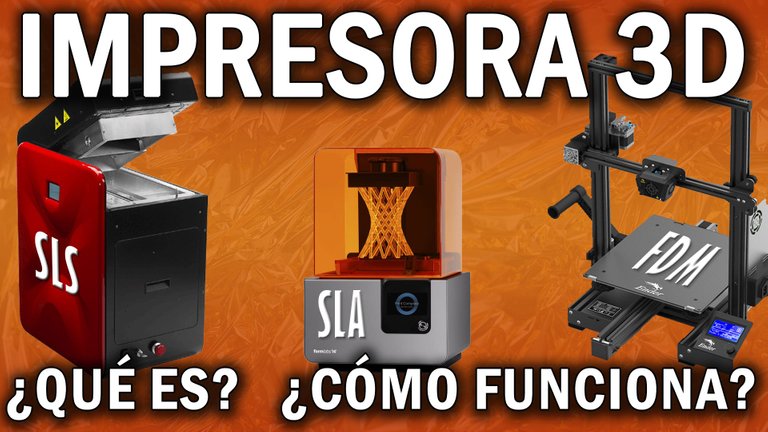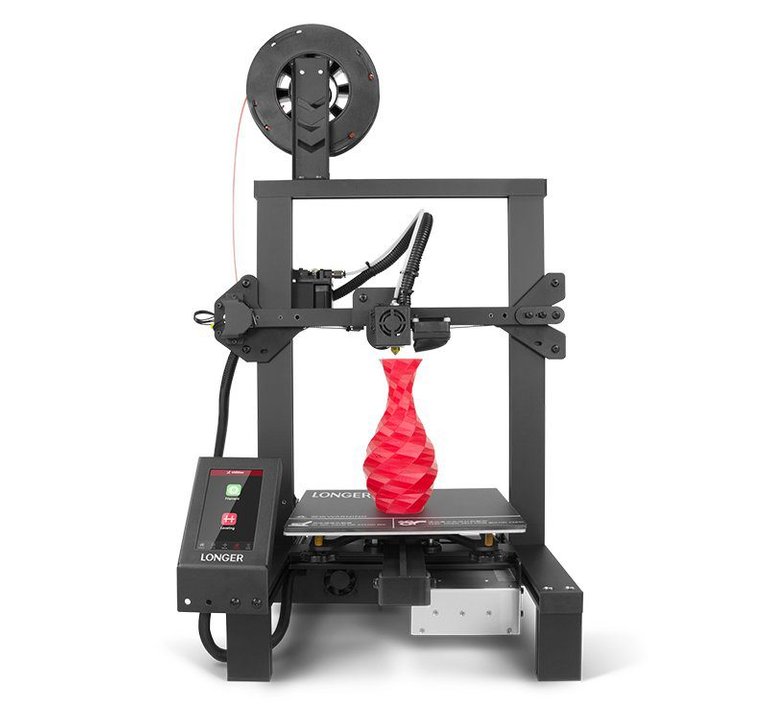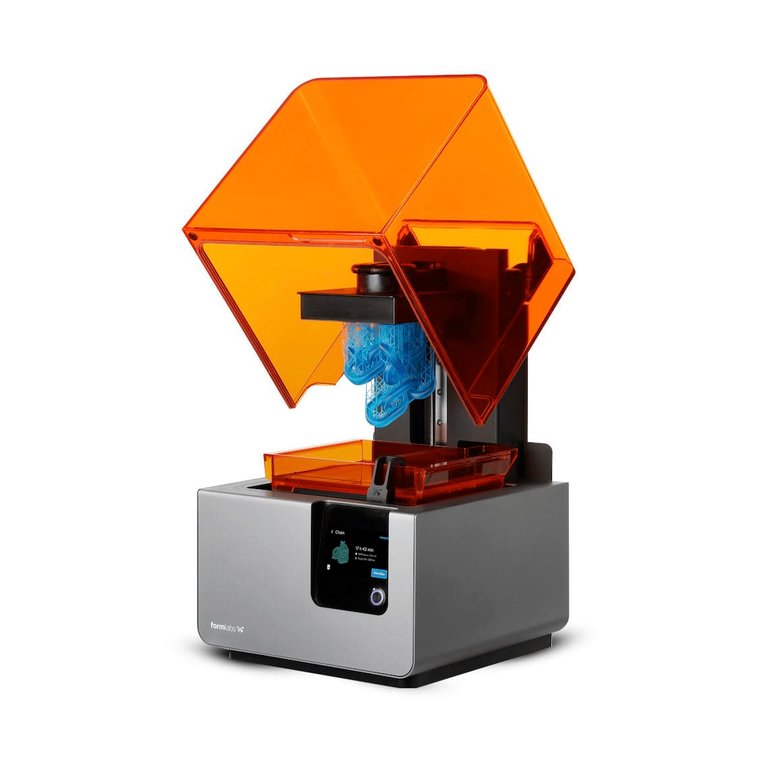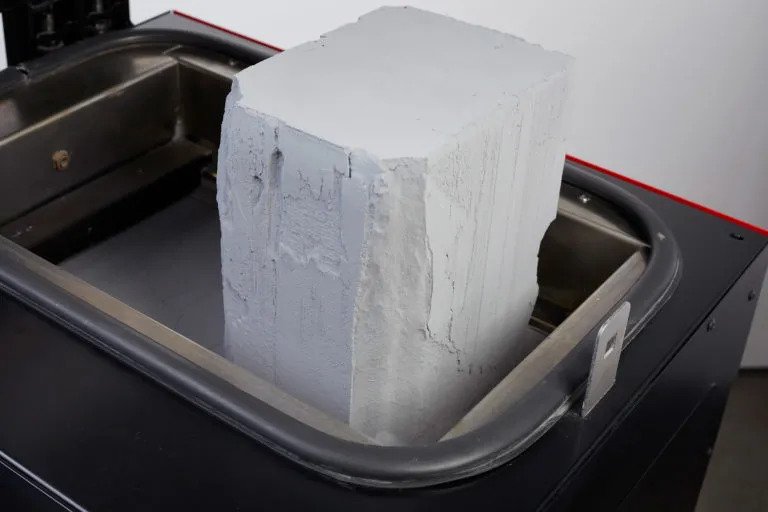Hola Hivers! Bienvenidos a mi blog | Hi Hivers! Welcome to my blog
La primera vez que oí hablar de las impresoras 3D fue hace seis años aproximadamente, por medio de un programa de TV Argentina (no recuerdo el nombre), en el cuál cada día se presentaban nuevos proyectos de innovación tecnológica con el fin de mejorar la calidad de vida de las personas. En uno de estos programas, emitidos semanalmente, recuerdo un proyecto presentado que trataba acerca de las prótesis impresas en 3D, una tecnología que abarataba muchísimo los costos dándole la posibilidad a personas con alguna discapacidad motriz y con bajo poder adquisitivo, de obtener una extensión de su cuerpo completamente funcional sin necesidad de tener mucho dinero para conseguirlo. Esto me llamó la atención en su momento, pero por cosas de la vida no le di mayor relevancia y no seguí buscando información al respecto.
Sin embargo, hace unos meses oí nuevamente hablar del tema, y esta vez me dediqué a investigarlo en profundidad. Habiendo comprado mi primera impresora 3D, mi energía está enfocada en aprender cada día más acerca de este maravilloso mundo. Por ese motivo, quiero compartirles información que he estado adquiriendo más la experiencia que voy sumando día tras día, impresión tras impresión.
The first time I heard about 3D printers was about six years ago, through an Argentine TV program (I don't remember the name), in which every day new technological innovation projects were presented in order to improve the quality of life of people. In one of these programs, broadcasted weekly, I remember a project presented that dealt with 3D printed prostheses, a technology that greatly reduced costs by giving the possibility to people with motor disabilities and with low purchasing power, to obtain a fully functional extension of their body without having to have a lot of money to get it. This caught my attention at the time, but for reasons of life I did not give it much relevance and did not continue looking for information about it.
However, a few months ago I heard about it again, and this time I decided to investigate it in depth. Having bought my first 3D printer, my energy is focused on learning more and more about this wonderful world. For that reason, I want to share with you the information I have been acquiring plus the experience I am gaining day after day, print after print.

Probablemente, las preguntas más comunes que se hace la mayoría de la gente (y las que me hice yo alguna vez) son: ¿Qué es y cómo funciona una impresora 3D?
Probably the most common questions most people ask (and the ones I once asked myself) are: What is a 3D printer and how does it work?

¿Qué es? | What is it?
Por definición, una impresora 3D es una máquina capaz de imprimir figuras con volumen a partir de un diseño hecho por una computadora. En otras palabras, a partir de un diseño plasmado en un archivo de código compatible, la máquina interpretará las coordenadas que le indica el mismo, y comenzará a ejecutar las técnicas que le ofrece su tecnología de impresión, creando así piezas tridimensionales.
By definition, a 3D printer is a machine capable of printing figures with volume from a design made by a computer. In other words, from a design captured in a compatible code file, the machine will interpret the coordinates indicated by the same, and will begin to execute the techniques offered by its printing technology, thus creating three-dimensional pieces.

¿Cómo funciona? | How does it work?
Hay diferentes tipos de impresoras 3D, en este caso voy a explicarles el funcionamiento de tres tecnologías de fabricación aditiva para plásticos:
There are different types of 3D printers, in this case I am going to explain the operation of three additive manufacturing technologies for plastics:
Modelado por deposición fundida | Fused deposition modeling (FDM)

En este caso, las piezas se construyen al derretir y extrudir un filamento termoplástico que un extrusor deposita capa por capa en el área de impresión. El material más usado por la mayoría de los usuarios es el PLA (ácido poliláctico), aunque también hay otros materiales especializados para cada propósito (ABS, TPU, PETG, entre otros). Es la técnica que menor resolución y precisión ofrece, pero es el más utilizado por la gente, principalmente debido a que es fácil de imprimir y que no requiere de ningún proceso de curación. Mi impresora posee este sistema.
In this case, parts are built by melting and extruding a thermoplastic filament that is deposited layer by layer in the printing area by an extruder. The most common material used by most users is PLA (polylactic acid), although there are also other specialized materials for each purpose (ABS, TPU, PETG, among others). It is the technique that offers the lowest resolution and precision, but it is the most used by people, mainly because it is easy to print and does not require any curing process. My printer has this system.
Estereolitografía | Stereolithography (SLA)

En pocas palabras, el funcionamiento de este tipo de impresoras se basa en una plataforma que se sumerge en un recipiente con un líquido (resina) y que va emergiendo poco a poco mientras una luz láser solidifica a la resina mediante reacciones químicas según una serie de coordenadas establecidas previamente en el archivo de impresión. Además, se le debe realizar un proceso de curación a la pieza, introduciéndola en un recipiente con agua y exponiéndola al sol o a una luz ultravioleta artificial. Como norma general, las impresoras de resina obtienen un resultado detallista y con un acabado liso.
In short, the operation of this type of printer is based on a platform that is immersed in a container with a liquid (resin) and that gradually emerges while a laser light solidifies the resin through chemical reactions according to a series of coordinates previously established in the print file. In addition, a curing process must be carried out on the piece by placing it in a container with water and exposing it to the sun or artificial ultraviolet light. As a general rule, resin printers obtain a detailed result with a smooth finish.
Sinterizado selectivo por láser | Selective laser sintering (SLS)

Es la técnica de fabricación aditiva más común para aplicaciones industriales. Posee una alta capacidad de generar piezas mecánicamente resistentes y funcionales. Esta tecnología usa un láser de alta potencia para fundir pequeñas partículas de polvo de polímero, utilizando Nailon como material principal. Es ideal para imprimir geometrías complejas ya que el polvo sin fundir sirve como soporte para la pieza durante la impresión y elimina la necesidad de agregar estructuras de soporte. Me encantaría en algún futuro tener o trabajar con una impresora de este tipo.
It is the most common additive manufacturing technique for industrial applications. It has a high capacity to generate mechanically strong and functional parts. This technology uses a high power laser to melt small particles of polymer powder, using Nylon as the main material. It is ideal for printing complex geometries as the unmelted powder serves as a support for the part during printing and eliminates the need to add support structures. I would love to own or work with such a printer in the future.

Cada sistema, a su vez, posee una gran variedad de diversas modificaciones y mejoras, lo que hace que el nivel de detalle y el acabado final de la pieza impresa varíe entre las diferentes impresoras del mismo tipo de técnica.
Each system, in turn, has a wide variety of different modifications and enhancements, which means that the level of detail and the final finish of the printed part varies between different printers of the same type of technique.

Reflexión Final | Final Reflection
Pienso que las impresoras 3D son el instrumento para mejorar la calidad de vida en diferentes ámbitos, tales como la industria, la enseñanza, la investigación, la medicina, entre otros. Reduciendo los costos de fabricación y reemplazando los materiales tradicionales para luchar contra la contaminación ambiental, es un proyecto a largo plazo que, en mi opinión, está yendo por buen camino.
I think that 3D printers are the tool to improve the quality of life in different fields, such as industry, education, research, medicine, among others. By reducing manufacturing costs and replacing traditional materials to fight against environmental pollution, it is a long-term project that, in my opinion, is going in the right direction.

¡Gracias por leerme! | Thanks for reading me!
¡Gracias por leerme! | Thanks for reading me!

Las fotos son de mi autoría | The photos are of my authorship @agustinezequiel
Separadores de texto | Text separators: Tutorialesteemit
Texto traducido en | Text translated in: DeepL
